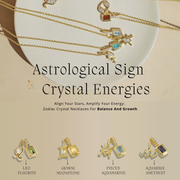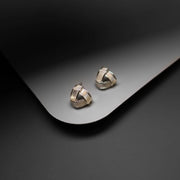Understanding Crystal Necklaces: Natural vs. Man-Made
Authentic crystal necklaces are crafted from minerals formed over millennia within the Earth’s crust. Unlike glass or plastic imitations, genuine crystals like quartz, amethyst, or turquoise exhibit unique geological traits:
Natural Inclusions and Variations
Real crystals often contain tiny fractures, mineral deposits, or color zoning—flaws that prove their natural origin. For example, rose quartz typically shows hazy "rutilated" streaks, while lab-created versions appear unnaturally uniform. These imperfections are celebrated in crystal jewelry as markers of authenticity.
Thermal and Tactile Properties
Hold a suspected crystal necklace to your cheek or weigh it in your palm. Genuine stones feel denser than glass and remain cooler longer due to their crystalline structure. Plastic fakes, by contrast, feel lightweight and warm quickly to body temperature.
Hardness and Durability
Use the Mohs scale to test hardness. A real quartz crystal (Mohs 7) can scratch glass, while dyed calcite (Mohs 3) will peel under pressure. For delicate stones like selenite, avoid water exposure—a telltale sign of authenticity is its water-soluble softness.
Identifying Fake Crystal Necklaces: Red Flags and Tests
The market is flooded with convincing fakes. Here’s how to spot them:
Too-Perfect Appearance
Mass-produced glass or resin crystal necklaces often have air bubbles, overly vibrant dyes, or machine-tooled symmetry. For instance, "aura quartz" with rainbow coatings is always lab-altered, even if the base stone is real.
Price and Origin Claims
A $10 "natural emerald necklace" from an uncertified seller is likely dyed quartz or glass. Authentic crystal jewelry from regions like Brazil (amethyst) or Afghanistan (lapis lazuli) comes with provenance paperwork.
Simple At-Home Verification
UV Light Test: Some synthetic crystals (e.g., cubic zirconia) fluoresce brightly under blacklight.
Streak Test: Rub the stone on unglazed porcelain. Real hematite leaves a red-brown streak; fakes smear inconsistently.
The Benefits of Wearing Genuine Crystal Jewelry
Beyond aesthetics, real crystal necklaces are prized for their energetic properties:
Amethyst for Stress Relief
Studies suggest this purple quartz may promote calmness by emitting negative ions. Wear it as a crystal necklace near the throat or heart to counteract electromagnetic frequencies (EMFs).
Black Tourmaline for Protection
A grounding stone often used in crystal jewelry, it’s believed to absorb negativity. Its high iron content also makes it electrically conductive—a unique trait fakes can’t replicate.
Personalized Energy Alignment
Unlike generic fashion accessories, authentic crystals interact with your body’s energy field. For example, lapis lazuli’s pyrite flecks are said to enhance intuition—a detail absent in painted imitations.
Where to Buy Authentic Crystal Necklaces: A Curated Approach
Follow these steps to avoid scams:
-
Reputable Sellers
Look for vendors who disclose a stone’s origin (e.g., "Zambian emeralds") and provide gemological certifications (GIA, AGL). Etsy shops with "handmade" tags often sell dyed stones—cross-check reviews for "untreated" or "natural" mentions. -
Ethical Mining Practices
Brands like Energy Muse or The Crystal Council trace their crystal necklaces to conflict-free mines. Fair-trade labeling ensures artisans are paid fairly, reducing the risk of cheap fakes. -
Return Policies and Guarantees
Trusted sellers offer authenticity guarantees. For example, a "7-day return if not genuine" policy indicates confidence in their crystal jewelry.
Final Checklist: How to Verify Your Crystal Necklace
Before purchasing, ask:
✔ Does the seller provide geological details (e.g., "natural inclusions" or "unpolished edges")?
✔ Is the price realistic for the stone’s rarity? (e.g., $50 for a "natural moldavite" is a scam.)
✔ Can you perform a simple test (scratch, UV, or water) if unsure?
Pro Tip: Bookmark this guide and compare your crystal necklace against our examples. When in doubt, consult a gemologist.







